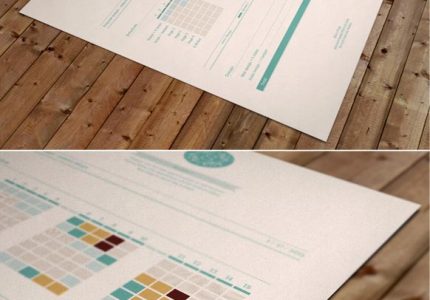Overview of Free Graphic Design Courses
Discover a wide range of free graphic design courses available online that can help you develop essential skills in visual creativity and digital design. These courses cater to beginners and experienced designers alike, offering valuable insights into tools, techniques, and principles that enhance your design workflow. Whether you want to learn the basics or advanced concepts, there are plenty of accessible options to improve your graphic design expertise at no cost.
What is a Free Graphic Design Course?
A free graphic design course is an educational program that offers lessons and training in graphic design principles, software skills, and creative techniques without any cost. These courses are designed to help beginners and enthusiasts learn the fundamentals of design, including understanding color theory, typography, layout, and visual communication, without the barrier of tuition fees.
Such courses often include a variety of resources, such as video tutorials, downloadable materials, and interactive assignments, enabling learners to develop practical skills at their own pace. Free graphic design courses are ideal for those looking to explore a career in design, enhance their existing skills, or simply pursue a hobby, making quality education accessible to everyone regardless of financial situation.
Benefits of Taking Free Courses
Free graphic design courses offer an excellent opportunity for beginners and aspiring designers to develop their skills without financial commitment. These courses provide valuable knowledge on design principles, software tools, and creative techniques, allowing learners to build a strong foundation in graphic design. Participating in free courses also enables individuals to explore their interests, enhance their portfolios, and improve their chances of landing freelance or professional opportunities.
Taking advantage of free graphic design courses comes with numerous benefits. They allow learners to acquire new skills at their own pace and convenience, often through flexible online modules. Additionally, free courses often come with updated content that reflects current industry standards, helping students stay relevant. Furthermore, these courses can serve as an affordable way to evaluate whether a career in graphic design suits your interests and goals, making it a smart starting point for anyone looking to enter the creative field.
Types of Graphic Design Skills Covered
Free graphic design courses offer an excellent opportunity for beginners and aspiring designers to develop essential skills without any financial investment. These courses typically cover a wide range of topics, providing learners with a comprehensive understanding of graphic design principles and tools. Participants can learn about various design software such as Adobe Photoshop, Illustrator, and Canva, as well as fundamental concepts like color theory, typography, layout, and branding. The courses are often structured to include tutorials, projects, and assessments, helping students build a strong portfolio and practical experience. Accessible online, these free courses make it easy for anyone interested in graphic design to start their learning journey at their own pace and convenience.
Popular Platforms Offering Free Graphic Design Courses
Joining a free graphic design course is an excellent way for aspiring designers to develop their skills without financial commitment. Several popular platforms offer comprehensive and accessible courses that cover various aspects of graphic design, from basic principles to advanced techniques. These platforms provide high-quality resources, tutorials, and projects to help learners build a strong portfolio and gain confidence in their design abilities.
Coursera
Coursera is a popular online platform that offers a variety of free graphic design courses from top universities and institutions. These courses are ideal for beginners and professionals looking to enhance their design skills without incurring any costs.
- Fundamentals of Graphic Design by the California Institute of the Arts
- Introduction to Graphic Design by the University of Colorado Boulder
- Creative Design and Innovation by the University of Illinois
- Visual Elements of Data Visualization by the University of Washington
- Design Thinking and Creativity for Innovation by the University of Sydney
edX
edX is a popular online platform that offers a variety of free graphic design courses taught by top universities and institutions. These courses provide students with essential skills in graphic design, including principles of visual communication, typography, and digital design tools. By enrolling in edX’s free courses, learners can enhance their creative talents and build a strong foundation for a career in graphic design without any cost. The platform also offers flexible learning options, allowing students to study at their own pace and access high-quality educational resources from anywhere in the world.
Udemy
Udemy is a popular platform that offers a wide range of free graphic design courses suitable for beginners and experienced designers alike. These courses cover essential topics such as Adobe Photoshop, Illustrator, and other design tools, helping students develop their skills at no cost. With high-quality content and expert instructors, Udemy provides an accessible way to learn graphic design online and enhance your creative abilities.
Canva Design School
Many popular platforms offer free graphic design courses to help beginners and enthusiasts develop their skills. Canva Design School is one such platform that provides a variety of free courses, tutorials, and resources to enhance your design knowledge and creativity.
- Canva Design School: Offers a wide range of free courses covering design basics, branding, social media graphics, and more, all accessible to users of all skill levels.
- Coursera: Features free courses from top universities and institutions on graphic design fundamentals, though some may require payment for certification.
- Udemy: Provides free and paid graphic design courses taught by industry professionals, with frequent discounts available.
- Alison: Offers free online diploma and certificate courses in graphic design, focusing on software skills and design principles.
- LinkedIn Learning: Includes a selection of free introductory courses on graphic design and related tools, often available through LinkedIn memberships or trial periods.
LinkedIn Learning (Free Trials)
LinkedIn Learning offers a variety of free graphic design courses through its free trial period, making it an excellent platform for beginners and professionals to enhance their skills. During the free trial, users can access a wide range of comprehensive courses taught by industry experts, covering topics such as typography, layout design, branding, and Adobe Creative Suite tools. This platform is known for its high-quality content and flexible learning options, allowing learners to explore different facets of graphic design at no initial cost. After the trial, users can choose to subscribe or explore other free platforms to continue their education in graphic design.
Curriculum and Course Content
Our free graphic design course offers a comprehensive curriculum designed to equip beginners with essential skills and knowledge in visual communication. Participants will explore fundamental concepts, creative techniques, and industry-standard tools, ensuring a well-rounded learning experience. Through engaging lessons and practical projects, students can build a strong foundation in graphic design and develop their own unique style.
Introduction to Graphic Design Principles
This free graphic design course offers a comprehensive introduction to fundamental principles that are essential for aspiring designers. Participants will learn about the core elements of graphic design, including typography, color theory, layout, and composition. The course is designed to provide a solid foundation in design concepts, enabling students to develop visually appealing and effective designs.
Throughout the curriculum, learners will explore the principles of balance, contrast, alignment, repetition, proximity, and hierarchy. These concepts are crucial for creating cohesive and engaging visual communications. The course also covers practical skills such as using design software, understanding formats, and preparing projects for print and digital media.
By the end of the program, students will have a strong understanding of core design principles and be equipped to apply these to various projects. Whether a beginner or someone looking to refresh their knowledge, this free course aims to build confidence and foster creativity in graphic design.
Design Tools and Software (e.g., Canva, GIMP, Inkscape)
The free graphic design course offers comprehensive curriculum and course content that covers fundamental and advanced concepts in graphic design. Students will explore principles of design, color theory, typography, and layout techniques to develop a strong foundational knowledge. The program emphasizes practical skills, enabling learners to create visually appealing designs for various media.
In addition to theoretical lessons, the course integrates the use of essential design tools and software such as Canva, GIMP, and Inkscape. Canva provides an intuitive platform for beginners to develop creative graphics quickly, while GIMP offers powerful features similar to Photoshop for more detailed image editing. Inkscape is ideal for vector graphic creation, allowing students to design scalable logos, icons, and illustrations. Through hands-on projects using these tools, learners gain valuable experience in applying design principles effectively and enhancing their digital design capabilities.
Typography and Color Theory
This free graphic design course offers comprehensive modules on curriculum and course content, focusing on essential principles such as typography and color theory. Students will explore fundamental design concepts and develop practical skills through structured lessons and hands-on projects.
- Curriculum and Course Content:
- Introduction to Graphic Design Principles
- Typography Fundamentals and Typesetting
- Color Theory and Color Palette Creation
- Design Software Tutorials
- Creative Project Development and Critique
- Typography:
- Understanding Typography Anatomy
- Choosing the Right Typeface
- Kerning, Leading, and Tracking
- Typography in Branding and Advertising
- Typographic Hierarchy and Readability
- Color Theory:
- Color Models and Color Wheels
- Color Harmony and Schemes
- Psychology of Colors
- Applying Color to Design Projects
- Tools for Color Selection
Logo and Branding Design
Our free graphic design course offers a comprehensive curriculum that covers fundamental principles, software skills, and practical projects to build your expertise. Participants will explore topics such as color theory, typography, layout design, and digital illustration, ensuring a well-rounded learning experience. The course content is structured to gradually increase in complexity, allowing beginners to develop confidence and proficiency in graphic design.
Additionally, the course emphasizes the importance of logo and branding design. Students will learn how to create effective logos that communicate brand identity and resonate with target audiences. The curriculum includes branding strategies, visual identity development, and case studies of successful branding projects. By the end of the course, learners will be equipped with the skills needed to craft compelling logos and cohesive branding materials, enhancing their portfolio and professional appeal.
Creating Visual Content for Social Media
This free graphic design course offers an in-depth curriculum focused on creating compelling visual content for social media. Students will explore fundamental design principles, including color theory, typography, and layout techniques, to build a strong foundation. The course covers practical skills such as using popular design tools like Canva, Adobe Photoshop, and Illustrator to craft engaging social media graphics. Learners will also delve into creating various types of content, including posters, banners, infographics, and animated visuals, tailored for platforms like Instagram, Facebook, Twitter, and TikTok. Through hands-on projects and real-world examples, participants will enhance their ability to design visually appealing content that captures audience attention and boosts brand presence online. The course emphasizes creativity, consistency, and audience engagement to equip students with the skills needed for successful social media marketing through graphic design.
Skills Gained from Free Graphic Design Courses
Taking free graphic design courses offers numerous valuable skills that can enhance your creative and professional abilities. These courses provide a foundation in essential design principles, software proficiency, and artistic techniques, enabling learners to produce visually compelling work. Whether for personal projects or career advancement, acquiring these skills can open up new opportunities in the dynamic world of visual communication.
Design Fundamentals
Taking a free graphic design course offers a valuable opportunity to develop essential skills that form the foundation of effective visual communication. These courses equip learners with a range of design fundamentals and practical abilities that are crucial for creating compelling graphics, whether for personal projects or professional work.
- Understanding the principles of design such as balance, contrast, alignment, repetition, proximity, and space
- Mastering the use of color theory to create visually appealing and harmonious designs
- Learning typography basics to select and manipulate fonts effectively
- Gaining proficiency in using design software tools like Adobe Photoshop, Illustrator, or free alternatives such as Canva and GIMP
- Developing skills in layout and composition to organize visual elements strategically
- Enhancing creativity and critical thinking in design processes
- Building an understanding of branding and visual identity
- Applying feedback and iterative improvement techniques to refine designs

Practical Software Skills
Participating in free graphic design courses allows individuals to develop a wide range of practical software skills that are essential in the creative industry. Students learn to proficiently use popular design tools such as Adobe Photoshop, Illustrator, and Canva, enabling them to create visually appealing graphics, logos, and layouts. These courses also provide hands-on experience with image editing, vector graphics, and typography, which are fundamental to professional design work. Additionally, learners gain knowledge of design principles like color theory, composition, and branding, enhancing their ability to produce cohesive and impactful visuals. The skills acquired through these free courses empower novices to build impressive portfolios and increase their employability or freelancing opportunities in the competitive design market.
Creative Problem Solving
Participating in free graphic design courses can significantly enhance your creative problem-solving skills, equipping you to tackle visual challenges with innovative solutions. These courses often teach you how to think critically about design limitations and use resourcefulness to achieve stunning results.
- Developing an eye for aesthetics and visual hierarchy
- Learning how to adapt design ideas to different mediums and formats
- Mastering the use of various design tools and software effectively
- Gaining the ability to analyze and improve existing designs
- Enhancing patience and perseverance through iterative design processes
Overall, free graphic design courses cultivate a mindset of creative problem solving, enabling learners to approach design challenges with confidence, ingenuity, and efficiency.
Portfolio Development
Participating in free graphic design courses provides valuable skills such as mastering design principles, developing proficiency with industry-standard tools, and enhancing creativity. These courses help learners understand color theory, typography, layout composition, and visual hierarchy, enabling them to create visually appealing designs. Additionally, students gain practical experience in software like Adobe Photoshop, Illustrator, or free alternatives, which are essential for professional work. Portfolio development is a significant benefit, allowing students to showcase their best work to potential employers or clients. By building a diverse and compelling portfolio through project-based assignments in these courses, students demonstrate their abilities and stand out in the competitive graphic design industry. Overall, free graphic design courses foster both technical expertise and a professional presentation that can significantly advance a learner’s career in design.
How to Choose the Right Free Graphic Design Course
Choosing the right free graphic design course can be a crucial step in developing your creative skills and building a strong portfolio. With numerous options available online, it’s important to consider factors such as course content, instructor expertise, and user reviews to find a program that suits your learning style and goals. Making an informed choice will help you gain valuable knowledge and confidence in your graphic design journey without any financial commitment.
Assessing Your Skill Level
Choosing the right free graphic design course begins with assessing your current skill level to ensure the course matches your abilities and learning goals. If you are a beginner, look for courses that cover fundamental concepts like color theory, typography, and basic design tools. For those with some experience, advanced courses focusing on software skills or creative project development can be more suitable. Consider your previous experience with design tools and your familiarity with graphic design principles when selecting a course, ensuring it neither overwhelms nor under-stimulates you. Additionally, review course descriptions and syllabus to confirm that the content aligns with your learning objectives and that it offers a balanced progression suitable for your skill level. Taking advantage of introductory lessons or sample materials can also help you determine if the course matches your current abilities before fully enrolling.
Course Reviews and Ratings
Choosing the right free graphic design course involves evaluating various factors such as course content, instructor expertise, user reviews, and ratings. It is essential to select a course that covers fundamental design principles, tools, and techniques relevant to your goals. Reading through detailed course descriptions helps ensure the curriculum aligns with your learning needs and interests. Additionally, consider the credibility of the platform offering the course and whether it provides practical assignments or projects to enhance your skills.
Course reviews and ratings are valuable resources for assessing the quality and effectiveness of a free graphic design course. Reviews from past students offer insights into the course structure, difficulty level, and instructor support. High ratings and positive feedback generally indicate a well-structured and helpful course. It is advisable to look for reviews that mention the clarity of instruction, comprehensiveness of content, and overall satisfaction to make an informed decision. Combining these reviews with your personal learning objectives will help you choose the most suitable free graphic design course to start or advance your skills.
Course Content Relevance
When selecting a free graphic design course, assessing the relevance of the course content is crucial to ensure it aligns with your learning goals and industry needs. Look for courses that cover fundamental principles such as color theory, typography, layout, and composition, as these are essential for effective design. Additionally, practical skills like using popular design software such as Adobe Photoshop, Illustrator, or free alternatives like GIMP and Canva should be included. Consider whether the course offers updated content reflecting current design trends and tools, as this will enhance your ability to create modern, professional work. Finally, review the course syllabus and materials to verify they are comprehensive enough to build a solid foundation while also offering advanced topics if you’re seeking to deepen your expertise.
Learning Style Preferences
Choosing the right free graphic design course depends on understanding your learning style preferences and aligning them with the course’s format. Visual learners benefit from courses that include plenty of videos, infographics, and visual demonstrations. Auditory learners should seek courses with lectures, podcasts, or discussion-based components. Kinesthetic learners prefer interactive tutorials, hands-on projects, and practice-based assignments that allow active engagement. Additionally, consider the course structure—whether it offers self-paced flexibility or scheduled classes—and look for reviews or testimonials to gauge effectiveness. Matching your learning style with the course’s delivery method will help you stay motivated and maximize your mastery of graphic design skills.
Certifications and Career Opportunities
Certifications play a vital role in enhancing your skills and opening new career opportunities in the creative industry. Pursuing a free graphic design course can help you acquire valuable knowledge and credentials, making you more competitive in the job market. Whether you’re an aspiring designer or looking to advance your existing career, earning recognized certifications can boost your confidence and credibility in the field of graphic design.
Certification Significance
Certifications play a vital role in boosting a graphic design professional’s credibility and marketability. They serve as formal recognition of skills and knowledge gained through training programs, such as a free graphic design course. Holding relevant certifications can open doors to diverse career opportunities, including roles like graphic designer, visual designer, branding specialist, or digital artist. Furthermore, certifications demonstrate commitment to ongoing professional development, which is highly valued in the competitive creative industry. By acquiring recognized credentials, aspiring designers can differentiate themselves and increase their chances of securing desirable positions or freelance projects. Overall, certification significance extends beyond validation; it enhances confidence, networking prospects, and career advancement in the vibrant field of graphic design.
Using Free Courses for Portfolio Building
Taking free graphic design courses can be a valuable way to earn certifications that enhance your professional credentials and open new career opportunities. These courses often provide essential skills and knowledge that are recognized by industry employers, helping you stand out in a competitive job market. By completing free courses, you can obtain certificates that showcase your abilities to clients and employers alike, boosting your portfolio and credibility.
Using free courses for portfolio building is a smart strategy to demonstrate your skills and creativity without incurring high costs. You can create a diverse range of projects based on course assignments, which can serve as tangible proof of your capabilities. Showcasing these projects in your portfolio helps attract potential clients or employers and provides practical experience that can lead to freelance gigs, internships, or full-time positions in graphic design.
Paths to Freelance and Full-Time Design Roles
Enrolling in a free graphic design course can significantly enhance your skills and open doors to various certifications that boost your professional credibility. Certifications such as Adobe Certified Expert or Canva Design Certification can validate your expertise and make you more attractive to potential employers or clients. With a strong portfolio and recognized credentials, you can explore a wide range of career opportunities, including roles like graphic designer, visual artist, or branding specialist. Additionally, the knowledge gained from these courses provides a solid foundation for transitioning into freelance work, where creativity and self-promotion are key. For those seeking stability and consistent income, these skills also pave the way to full-time design roles within advertising agencies, corporations, or tech firms. Ultimately, a free graphic design course offers a flexible path to developing your career, whether you aim for freelance independence or a steady full-time position in the industry.
Tips for Maximizing Free Graphic Design Course Benefits
Enrolling in a free graphic design course is a fantastic way to develop your creative skills without financial investment. To make the most of these opportunities, it’s essential to approach the course with a strategic mindset, actively engage with the coursework, and seek practical experience. By following some key tips, you can maximize the benefits of your free graphic design journey and set yourself on a path toward professional growth and success.
Consistent Practice
Taking advantage of a free graphic design course can significantly enhance your skills if approached with consistency and dedication. To maximize the benefits, it is essential to practice regularly, dedicating time to applying what you learn in real projects. Consistent practice helps reinforce new concepts and improves your creativity and technical skills over time.
Set clear goals for each module or lesson to stay focused and motivated throughout the course. Challenge yourself by working on diverse projects, such as branding, social media graphics, or layouts, to expand your portfolio and adapt to different design styles. Engaging with community forums or peer groups related to the course can provide valuable feedback and inspiration, fostering a collaborative learning environment.
Additionally, keep a personal design journal or portfolio to track your progress and revisit your work periodically. This not only boosts confidence but also highlights areas that need improvement. Remember, consistency is key—make a schedule that fits your routine and stick to it, ensuring continuous growth and mastery of graphic design skills through your free course.
Engaging in Community and Forums
Participating actively in community and forums related to your free graphic design course can greatly enhance your learning experience. Engaging with fellow students allows you to exchange ideas, receive feedback, and stay motivated throughout your learning journey. Don’t hesitate to ask questions and contribute to discussions, as this interaction helps solidify your understanding of concepts and broadens your perspective. Additionally, many communities share valuable resources, tutorials, and job opportunities that can complement your coursework. Building a network within these forums can also open doors to collaborative projects, internships, and freelance work, ultimately maximizing the benefits you gain from the free graphic design course.
Completing Projects and Assignments
To maximize the benefits of a free graphic design course, it’s essential to stay proactive and engaged throughout the learning process. Make sure to regularly practice the skills you acquire by working on personal projects or mock assignments. This hands-on approach helps solidify your understanding and builds an impressive portfolio. Breaking down projects into manageable steps can make complex tasks less overwhelming and improve your overall efficiency.
Stay organized by keeping track of deadlines and assignment guidelines, which ensures timely completion and quality work. Don’t hesitate to seek feedback from peers or instructors, as constructive criticism can significantly enhance your skills. Utilize supplementary resources like online tutorials, design communities, and forums to expand your knowledge and stay updated with the latest trends. Finally, continuously challenge yourself by experimenting with different styles and tools to develop a versatile design skillset that will set you apart in the graphic design field.
Staying Updated with Design Trends
To maximize the benefits of a free graphic design course, actively participate in all assignments and projects to enhance your practical skills. Engage with fellow students in discussion forums to gain diverse perspectives and feedback. Regularly review course materials and supplementary resources to deepen your understanding. Practice consistently by working on personal or freelance projects to build a strong portfolio. Keep an open mind and be willing to experiment with different styles and tools to discover your unique design voice.
Staying updated with the latest design trends is crucial for staying relevant in the industry. Follow reputable design blogs, websites, and social media channels to keep abreast of new techniques and popular aesthetics. Subscribe to design newsletters and participate in webinars or virtual conferences. Join online design communities and forums where professionals share insights and recent trends. Continuously learning and adapting your skills to current trends will ensure your work remains fresh, appealing, and competitive.





